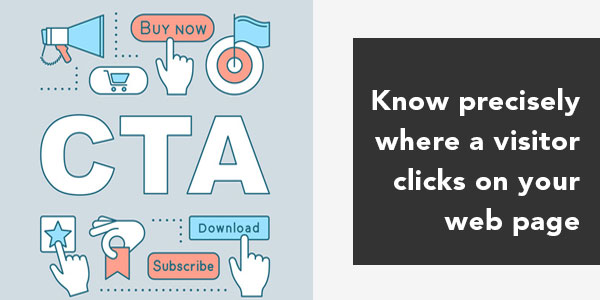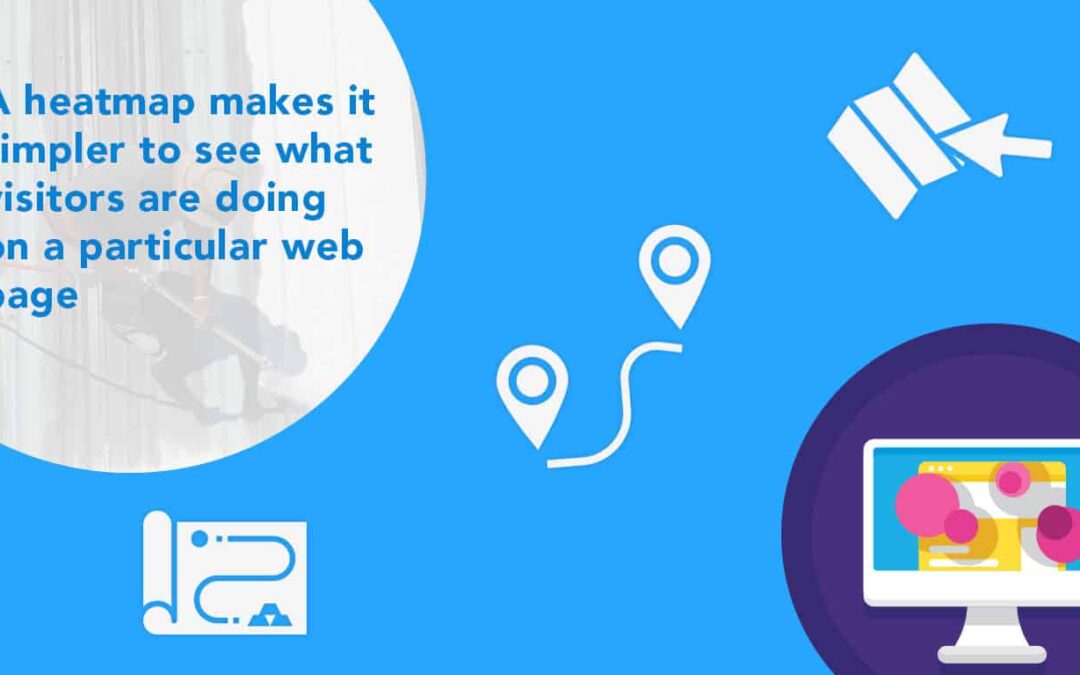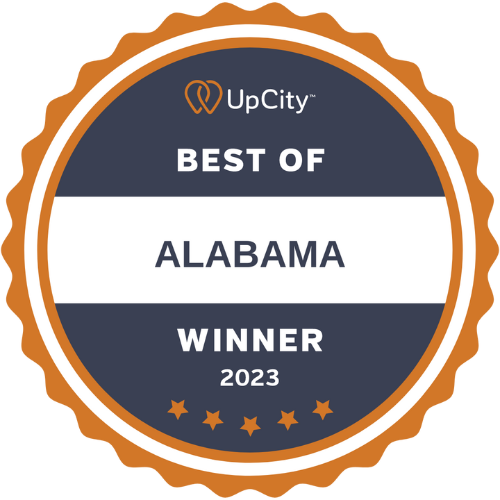When you’re on someone’s roof, finding the holes you need to patch is probably the easy part. Actually patching them is a bit different. You have to figure out what to use to fix the problem, knowing the homeowner also wants it to match the rest of the roof.
Conversion rate optimization isn’t much different in regards to your marketing. Generating leads and attracting visitors to your website is often the simple part. What’s complicated is getting them to convert into actual business, and then improve that conversion rate over time.
Tracking how people actually interact within your website, and the barriers to them filling out a form or calling you is commonly referred to as conversion rate optimization.
Without the right tools it’s very hard to pull off. However, a heatmap makes it simpler to see what visitors are doing on a particular web page.
Table of Contents
What Is a Heatmap?

When you first hear the term heatmap, your mind might start thinking of what parts of a roof are hotter than others. Based on the angle of the sun, the layout of a roof you work on, and the time of day, you just know from personal and professional experience what parts will be worse than others. You know where you’d rather be on a roof than not.
Website heatmaps are similar. They’re graphical representations of how your online visitors interact with your digital content and various elements of each web page. Heatmaps actually have roots in displaying live-time financial market data that traders use in making their decisions. However, in web design, a heatmap is applied towards:
- tracking
- quantifying
- and displaying the mouse movements and clicks users make.
This is data you can use to determine whether or not your website is working as it is intended to. Applying such data lets you correct anything that might be wrong with the website as a whole or, just individual web pages that aren’t up to par with the rest. Even if your site is working as well as you hoped, you can also glean ideas for improving your conversion rates to higher levels or even trying out new things for more business.
Kinds of Heatmaps

Heat Mapping can cover three different kinds of actions that website visitors do to give you categorized data into their interactions with your website.
- Click Maps: Click mapping shows you where visitors click using desktop mice or tap using mobile technology. You can even do touch heatmapping just for mobile devices, such as smartphones and tablets. These maps get color-coded to highlight elements that are clicked or tapped the most.
- Move Maps: These maps track where people move their mouse and then pause as they navigate a page. Hotspots in such maps show where a mouse pauses. Research has established correlations between where someone’s mouse is and where they are actually looking. This lets you know what they are specifically focusing on when using your website.
- Scroll Maps: Scroll mapping lets you see how many visitors actually scroll down towards a particular part of the web page.

Three Ways to Boost Conversion Rates With Heatmaps
Heatmaps are useful in increasing your conversion rates. The following are three specific ways you can accomplish this:
1. Minimize Cart Abandonment
For a roofing company, the most likely ‘checkout’ action is going to be a contact form that appears somewhere on your main pages. Is your checkout page not converting your visitors as much as you want? Heatmap data can show you where they actually click. It’s possible they’re moving their mouse cursor all over the place simply because the Submit button isn’t apparent to them. If you’re also in the roofing supply business, pay close attention to the map for your checkout buttons…

You might discover that they’re getting distracted by another web page element, such as a promotional banner or intriguing link. Removing or relocating such on-page elements might fix your problem quickly and easily.
2. Optimize the CTA
Since heatmaps let you know precisely where a visitor clicks on your web page, you know whether or not they actually follow the directives of a CTA. Heatmap data can also track human eye movements to some degree. This is effective in ascertaining which parts of a page attract the most visual attention. Knowing something like this means you can streamline your web page design by putting your call to action in a spot the visitor’s eyes are likely to naturally gravitate towards.

3. Identify Any Dead Elements
Heatmaps can also identify elements that your website visitors either overlook or just outright ignore. You can use this information to decide whether or not certain elements should be:
- Kept
- Deleted
- Relocated
Are Heat Maps Worth It?
When you get up on a roof, you might be able to tell a lot about a homeowner just from their roof:
- When the side facing the street looks better, you know they care about the impression their home makes.
- When you see repairs attempted but not necessarily professional-grade, they care about their home but they also believe in DIY.
- When no one has been up there in a while, the homeowner has had other priorities.
Likewise, heat mapping can help you get to know your own website visitors:
- What are they interested in?
- What do they respond to?
- What are they looking for?
- What keeps them on your site?
There are other forms of conversion optimization available, but heat mapping offers a rare one-two punch of:
- Affordability: You can collect data without having to do extra research or run focus groups.
- Effectiveness: A/B testing of different versions of the same web page helps you figure out specific funnel ends that work best.

Get Specialist Help from Webology
People call you because they don’t have the skills, tools, or experience to handle their own roofing matters. It only makes sense that you at least consider calling experts in roofing SEO and conversion optimization.
Sign up for our free website audit, and we’ll go through your roofing business domain online looking for everything that needs fixing or just tweaking. Even a good roof needs a regular inspection, and your website could use an objective analysis from industry experts once in a while.
Our audit costs you nothing, and conversion optimization is just one of many things about it we can make work better for you and your business.






